The Big Easy Revisited
As our 2023 winter trip winds down, this post is a compilation of several days of exploring during our second visit to New Orleans in as many years. We dug a little deeper into its history and it was nice to see the city from this new perspective.
Click on the first photo in each group and scroll to see the square photos at full size.
To start at the beginning of this series, visit Seeking the Sun 2023.
Doing a 180
We started last year’s road trip with our first visit to New Orleans. Similar to our first visit to PCB in 2020 – even though we had just driven to the Gulf of Mexico – we still needed our winter coats and gloves on several occasions. So this year (2023) we ended our trip in PCB then New Orleans, and those extra two months gave us much more pleasant conditions in both locations.
Audubon Park
Audubon Park is one of the largest parks in New Orleans and is named after the artist and naturalist John James Audubon, who lived here in the 1820s. Along with a zoo inside the park – pedestrian and bike paths, tennis courts, playgrounds, and picnic shelters offer plenty of things to do and a little relief from the sun.
Audubon Park shares its southern border with the Mississippi River – a portion of the river that appears to be flowing west to east. Reviews say that the Riverview Pavilion offers the best view of the river, especially at sunset. I think we definitely have to return on our next trip to the area to check out the sunset views, the zoo and more of the walking paths.
“John James Audubon (1785-1851) was not the first person to attempt to paint and describe all the birds of America (Alexander Wilson has that distinction), but for half a century he was the young country’s dominant wildlife artist. His seminal The Birds of America, a collection of 435 life-size prints, quickly eclipsed Wilson’s work and is still a standard against which 20th and 21st century bird artists, such as Roger Tory Peterson and David Sibley, are measured.” ~ READ MORE
The Tree of Life
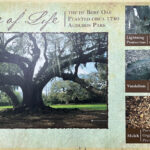 Audubon Park is also home to the fantastic Tree of Life (officially the Étienne de Boré Oak) – one of the oldest live oaks in Audubon Park. It may have been planted by the first mayor of New Orleans (Jean Étienne de Boré) as a wedding gift to his bride. The sign in the photo at right reads Circa 1740, so this tree has witnessed a lot of history in its long life.
Audubon Park is also home to the fantastic Tree of Life (officially the Étienne de Boré Oak) – one of the oldest live oaks in Audubon Park. It may have been planted by the first mayor of New Orleans (Jean Étienne de Boré) as a wedding gift to his bride. The sign in the photo at right reads Circa 1740, so this tree has witnessed a lot of history in its long life.
These days the tree serves as a prime location for weddings, tree-climbing, and giraffe-watching. Wait, what? Just to be clear, I did not hoist myself onto the limbs of the tree to peer over the fence and into the giraffe exhibit at the zoo – but I did examine it pretty throughly from the ground. It is a lovely tree and is wisely equipped with lightening protection.
Camp Parapet and a Break
On our quest for some history, we were pretty disappointed in our next stop while peeking through a chainlink fence. Camp Parapet was a Confederate fortification that was meant to protect NOLA from a Union attack from upriver. Since the Union came in from below instead, the fortification was never used. After the capture of NOLA, U.S. forces expanded the fortifications to defend against a Confederate counter-attack – which never happened either. Not much to see here folks!
Our stop for lunch (and a Gnarly Barley Jucifer IPA) was fantastic though! Located on Historic River Road and adjacent to the Mississippi River, the Rivershack Tavern is a “funky roadhouse by the levee.” It was pretty slow this afternoon, but with live music, Cajun pub grub and a bar with a sizable beer selection, we will definitely be coming back here on our next visit for an evening of entertainment!
World War II Museum
A little separation is good, right? One day Jim had his idea of a good day and I had mine! He rarely takes pictures, so I snapped a few before I headed out on my own adventure.
“The National WWII Museum tells the story of the American experience in the war that changed the world – why it was fought, how it was won, and what it means today – so that all generations will understand the price of freedom and be inspired by what they learn.” ~ READ MORE
The World War II Museum is HUGE! The first building on the left is packed with two (or three) floors of displays and videos. A skywalk leads to the other side of the street, where buildings (or areas) with names like Solomon Victory Theater, Hall of Democracy, and US Freedom Pavilion encircle a parade ground. That side of the street offers a more interactive experience and some may require an additional fee. Jim barely scratched the surface on his four-hour visit and didn’t even make it to the other side of the street.
Harmony Circle
My goal for the day was to head just across the street to an art museum. When I realized there were a few other things to visit within blocks, I added them to my itinerary as well.
Tivoli Circle is a roundabout originally named after a town in Italy. Its name was changed to Lee Circle in the 1880s when a statue of Robert E. Lee was erected at the top of the column pictured below.
In 2017, Lee’s statue was the last of four Jim Crow-era monuments taken down in New Orleans and in 2022, the Circle’s name officially went back to Tivoli Circle. At that time, the grassy park inside the traffic circle was named Harmony Circle to reflect New Orleans’ desire to – “come together and make our community whole. We celebrate our diversity as a strength, not as something that will tear us apart.”
Howard Memorial Library
Walking back up the street from Harmony Circle, I was able to get a better look at the Howard Memorial Library (aka Patrick Taylor Library). In 1889 it opened as a Louisiana reference library, with about 9,000 books. There is a more-aerial view of the library at this link, along with more history of the building and what it’s used for today. It’s really something!
“The dedication of this building also signaled the birth of the Louisiana Historical Association (LHA), a historical society of confederate veterans who were to oversee and expand a collection of confederate relics and archives.” As the books and the small collection of relics grew and competed for space, there became a need for an annex.
Louisiana’s Civil War Museum
As I walked back up the street, I made a left to see that annex – Confederate Memorial Hall‘s very own gorgeous red building! I’ve heard from several people that it’s an excellent museum, so I’m going to stop here because we will probably be visiting on our next trip south. I hope to get a peek into the old library, so wish me luck!
Ogden Museum of Southern Art
Perfect Timing
I just love art museums. Wide open spaces allow reflection to breathe-in the unique collection behind each exhibit. Shortly after I started my wandering, I heard some talking as a group followed a gentleman from one room to another. They seemed to ignore several “exhibit closed” signs, so I returned to the desk to ask if it was OK for me to glom onto the group. She was very excited by my perfect timing and told me to go ahead and join the curator of the museum who was giving a tour to a roomful of docents for the next exhibit!
A Few Examples
The first two photos below are entitled “Mardi Gras Mosaic” by the Martin Behrman Charter School (2009)
“At the end of Carnival season, Natalie Barnes worked with first and second grade students from Behrman Charter School to make use of the godly hoard of beads amassed during the prior festivities…
Students were to draw a place, a pet, a person, or a plant that detailed something about them. Through the drawings Barnes learned, among other things, that the children were Stingers – the bee is the mascot of their school. She incorporated the children’s drawings into a large mural that depicted the school within a neighborhood of houses, flowers, birds, clouds, and, of course, a bee. The children then created the mosaic by gluing Mardi Gras beads into the color fields determined by the artist. The stylized rainbow reflects the promise of this charter school of arts and science in Algiers, one of the oldest neighborhoods of the city.”
Click on the paintings for artist credit in the captions. The exhibit was absolutely amazing with lots of Louisiana history and beautiful landscapes depicted.
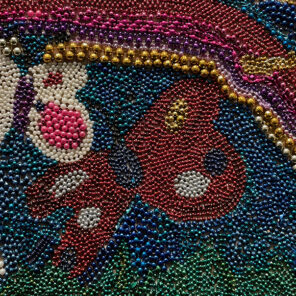
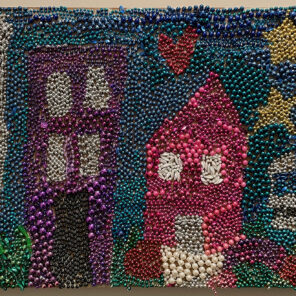
Up on the Roof
Several metal sculptures (and great views of the city) made it imperative to check out the roof! The two bridges in the distance – known locally as the Crescent City Connection – take US 90 across the Mississippi River and to Algiers. And this vantage point shows exactly how HUGE the World War II Museum is, and its close proximity to the Civil War Museum and the Howard Library.
Julia Row (the highlight of my day!)
“Known as the “Thirteen Sisters,” these three-and-a-half-story red brick row houses were built in 1832-33… Built to accommodate the affluent, the houses had degenerated into boardinghouses and tenements by 1900, as the wealthy relocated to the uptown suburbs. The Preservation Resource Center (PRC) purchased 604 Julia in 1976 and renovated it in the 1980s, setting off a wave of renovation of the other houses on this block and the area in general; now, all are renovated, with commercial space on the ground floor and residential above. Architect Henry Hobson Richardson lived at 640 Julia Street as a child, from 1838 to 1841.” ~ Click to see better photos of the entire block
George Schmit Gallery
I barely scratched the surface of Julia Row, but that was OK with me! As I turned the corner I saw an older gentleman getting some fresh air outside a gallery. He seemed very friendly and invited me in to see the gallery. I went in the door at the George Schmit Gallery and realized that it was George himself – an eccentric old artist who has had a gallery here for years.
We had a marvelous conversation and George showed me a lot of his paintings and explained what he was thinking and where he was living at the time he painted them. He had a great sense of humor which made my visit very memorable! George has traveled the world and has the paintings to prove it, but he loves his New Orleans the most. Check out his bio which tells how he got his start, and how much he is beloved in return by his city of New Orleans.
A Ferry Ride to Algiers Point
Today we decided to celebrate another beautiful day with a ferry ride across the Mississippi. We walked Canal Street past the Fillmore New Orleans music venue (purely for personal reasons) and headed to the River Walk location of Cafe du Monde for another dose of beignets.
We made it to the ferry for its departure (on the :15 and :45) with time to spare. As it turned out, the waiting in line may have taken longer than the actual ferry ride across, but it was fun and it was great to see the New Orleans skyline from the water again.
Safe Arrival
Some friends visited Algiers Point a while back and said there really wasn’t a lot to see here, but it was still a fun day. Knowing that our options were limited, we snooped around the Algiers Courthouse for a while.
“Algiers Courthouse. Erected in 1896 to replace the Duverjé Plantation House which served as the courthouse from 1866 until it burned in the great Algiers fire of 1895. Barthelmy Duverjé acquired title to the plantation in 1805 and in 1842 the property was subdivided as Algiers.” ~ from the sign below
“By 1725, the vast majority of enslaved people brought from West and West Central Africa to be sold in Louisiana were put on shore near this site.” ~ a sign outside the courthouse
Victorian Embellishments
“Explore. Relax. Its pace may be quiet, but its architecture is not – the wood houses lathed and carved in a variety of Victorian embellishment, shout their individuality. And history: The War of 1812, the Union occupation, an 1895 fire almost leveled it. But back Algiers came to make music. Jazz flourished here with neighborhood artists such as Kid Valentine and Papa Celestine. Algiers still sings its own New Orleans tune. Cross the water and listen.” READ MORE
A Stroll + a Beer = the Perfect Day
We had two pubs picked out for a beer and some lunch, and strolling past lots of lovely homes sounded like a perfect day to us! We started at the Crown & Anchor English Pub for a Guiness, and ended at the Dry Dock Café to try a Muffaletta (delicious!) and a couple of beers. It doesn’t get any better than this!
Jazz Walk of Fame
Although we totally missed the “Welcome to Old Algiers” sign on the way in, we had a little time before the ferry was ready to board, so we could read the signs as we walked a little ways down the Jazz Walk of Fame.
“Settled 1719, Algiers Point is New Orleans’ second oldest neighborhood and listed on the National Register of Historic Places. Walk the quiet streets of this 19th century village and discover the “Secret Jewel of New Orleans” Suggested Route (approx. 2 miles) Researched and written by Judi Robertson and Kevin Herridge.” ~ READ MORE to get info on a walking tour
Till Next Time, New Orleans!
Next up: A Soggy Day in Baton Rouge
Happy trails,
Barb




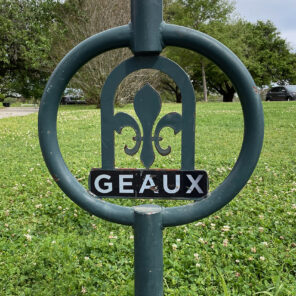
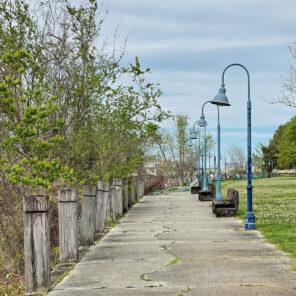
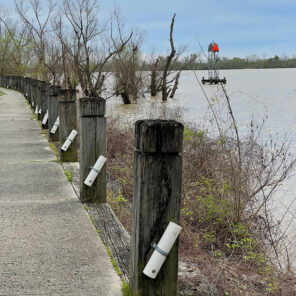
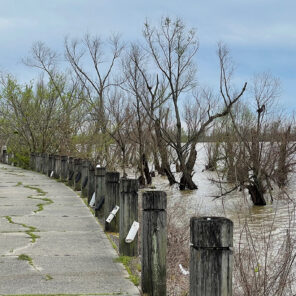
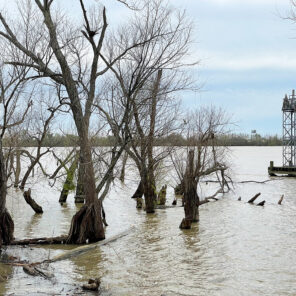
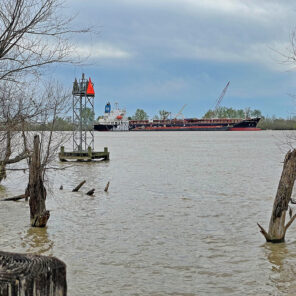
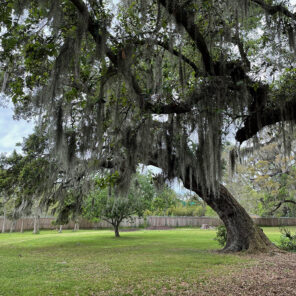

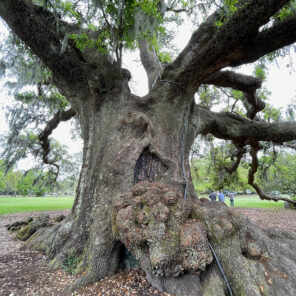
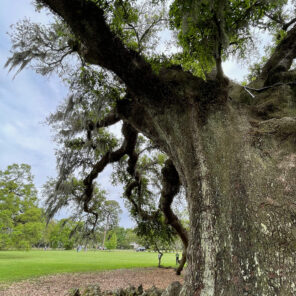
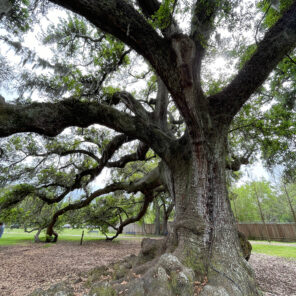
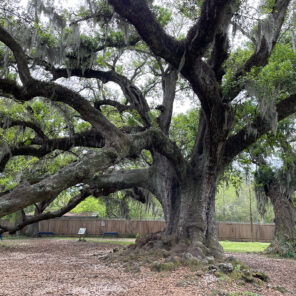
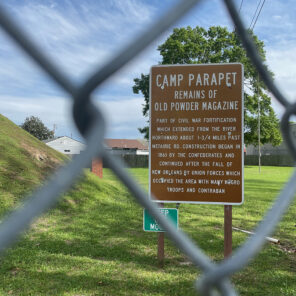
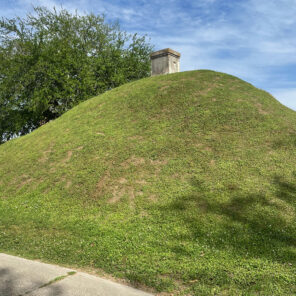
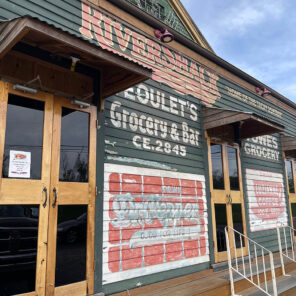



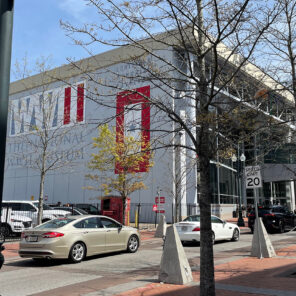
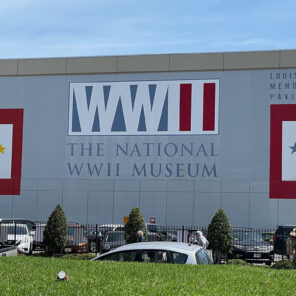

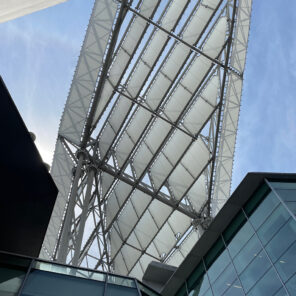


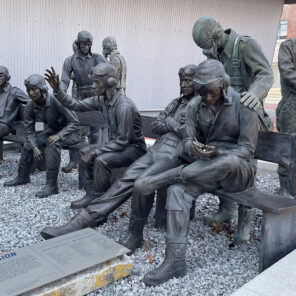
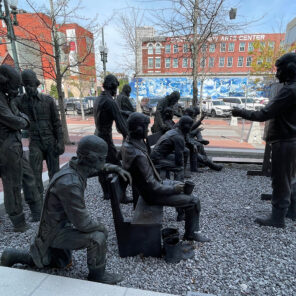

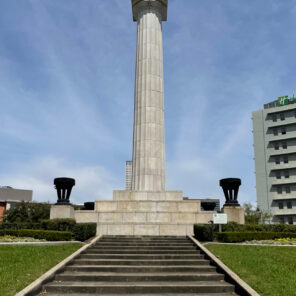

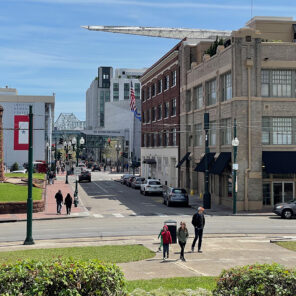
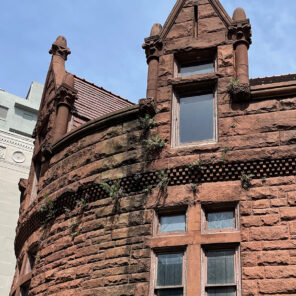
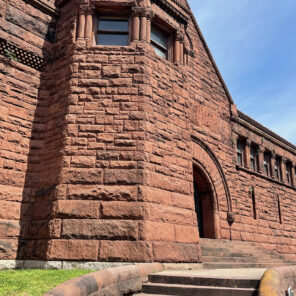
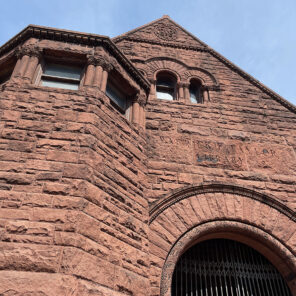
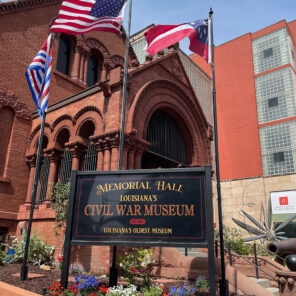
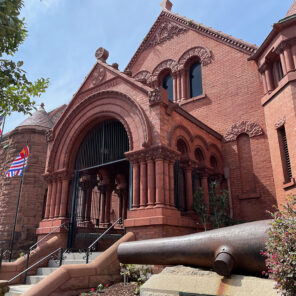

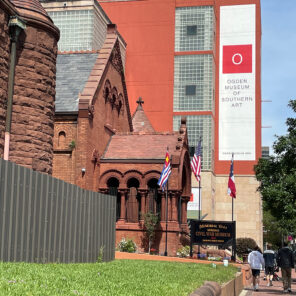
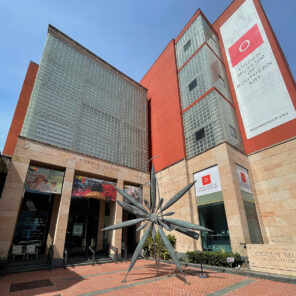
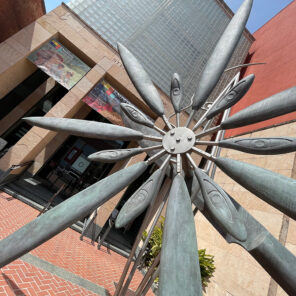
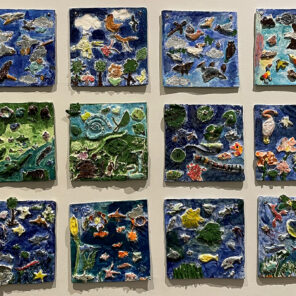
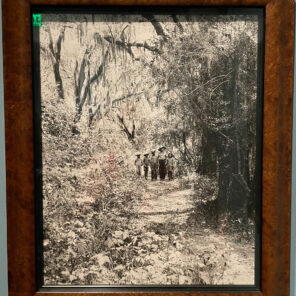
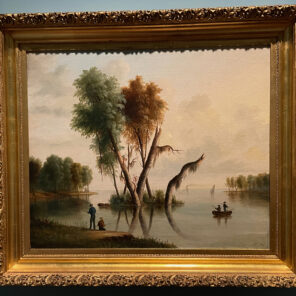

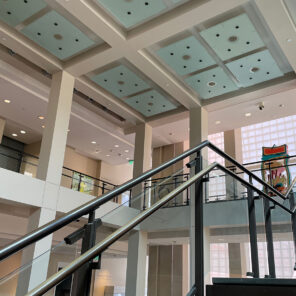
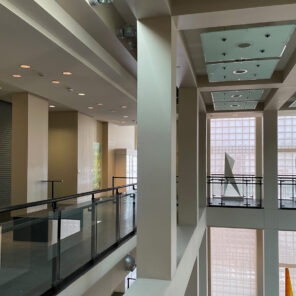
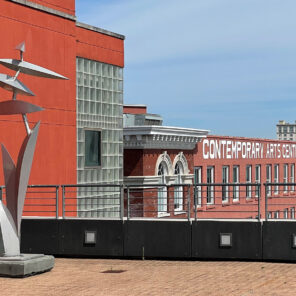
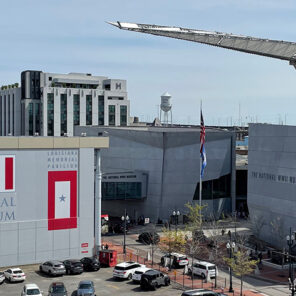


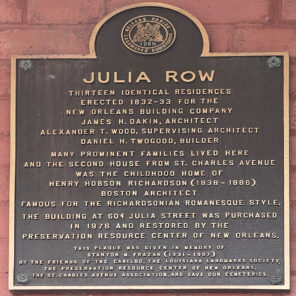


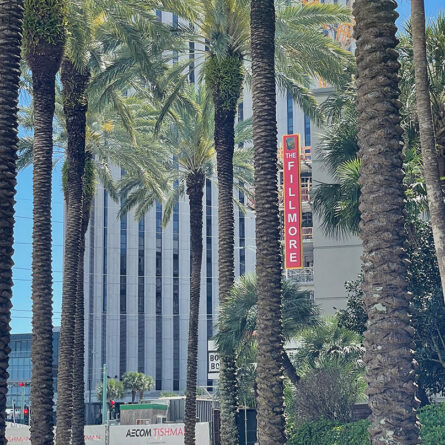
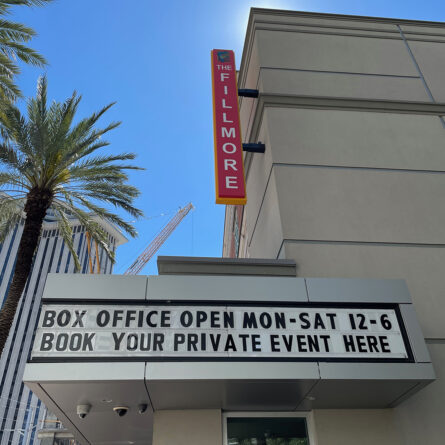
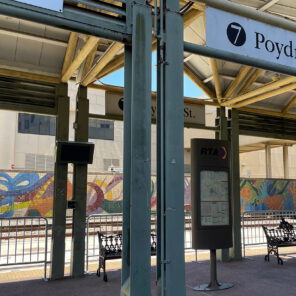
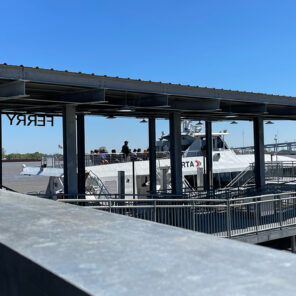

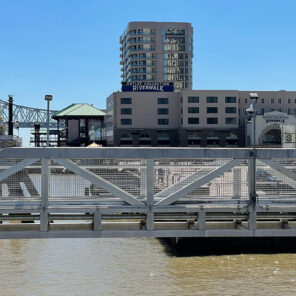
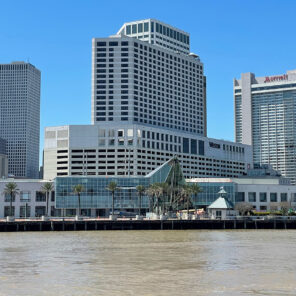
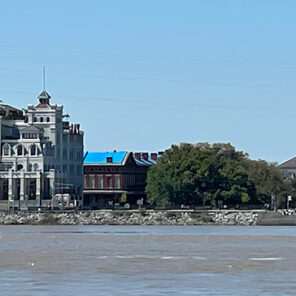
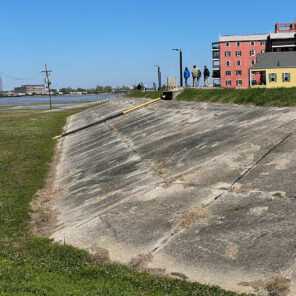
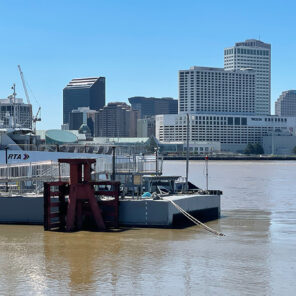
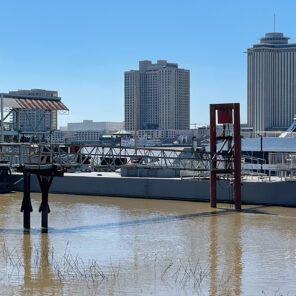
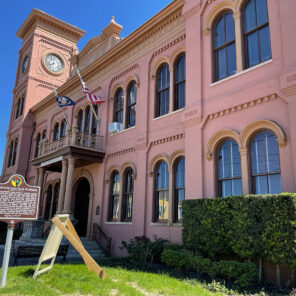
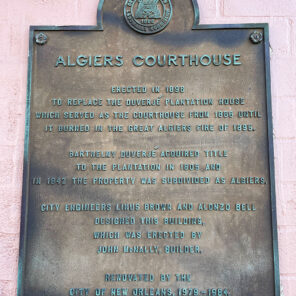


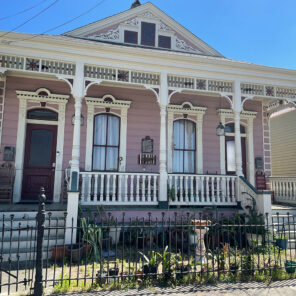
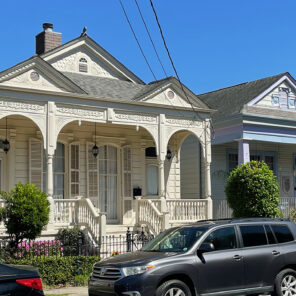
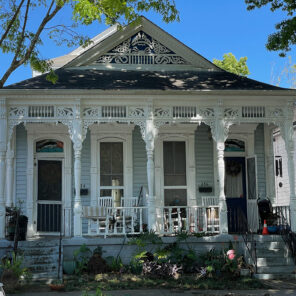


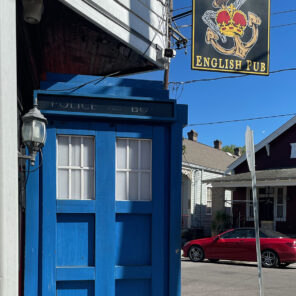
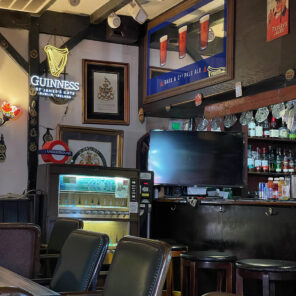
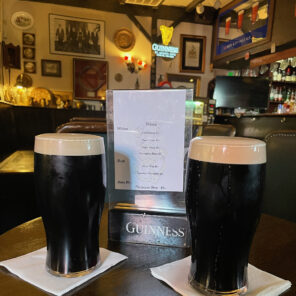
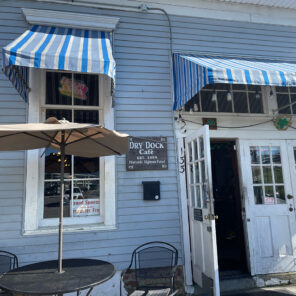


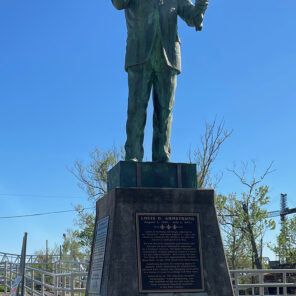
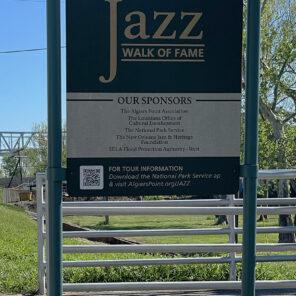

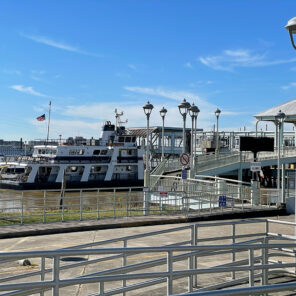
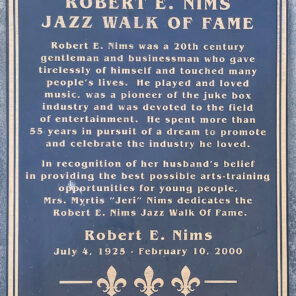
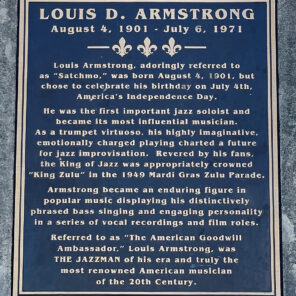
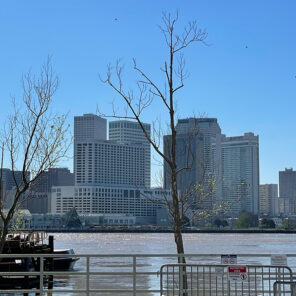

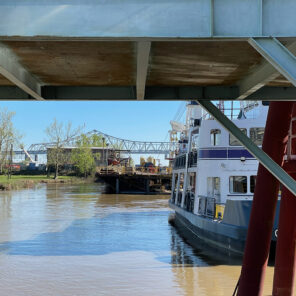






Comments are closed here.